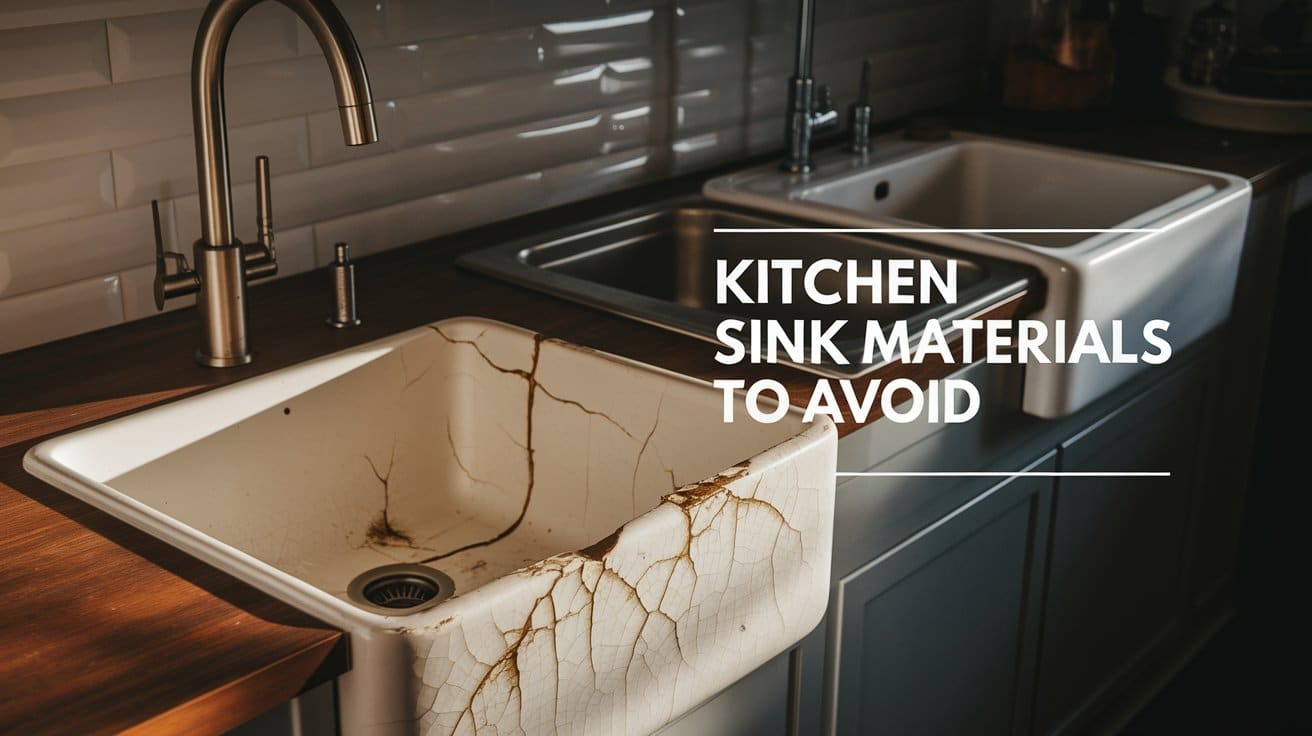Frustrated with kitchen sink problems that never seem to end? Your sink is one of the hardest-working fixtures in your home, but the wrong material can quickly turn it into your biggest headache.
Imagine avoiding constant chips, stains, and costly repairs simply by choosing smarter.
Many homeowners settle for sinks that fail within months, resulting in lost time, money, and peace of mind. Don’t let your investment go to waste.
We’ve tested and reviewed the 12 worst kitchen sink materials to avoid—read on and make an informed choice that keeps your kitchen running beautifully for years.
Why Kitchen Sink Material Selection Matters
Your kitchen sink endures more daily use than nearly any other home fixture. From handling hot cookware to facing harsh cleaning chemicals, the material of your sink determines its lifespan and functionality. A poor choice leads to:
- Constant maintenance issues
- Costly early replacements
- Hygiene concerns from bacteria buildup
- Lower home resale value
- Daily frustration with water spots, stains, and damage
The Most Problematic Kitchen Sink Materials to Avoid
1. Porcelain Sinks: Beautiful but Fragile
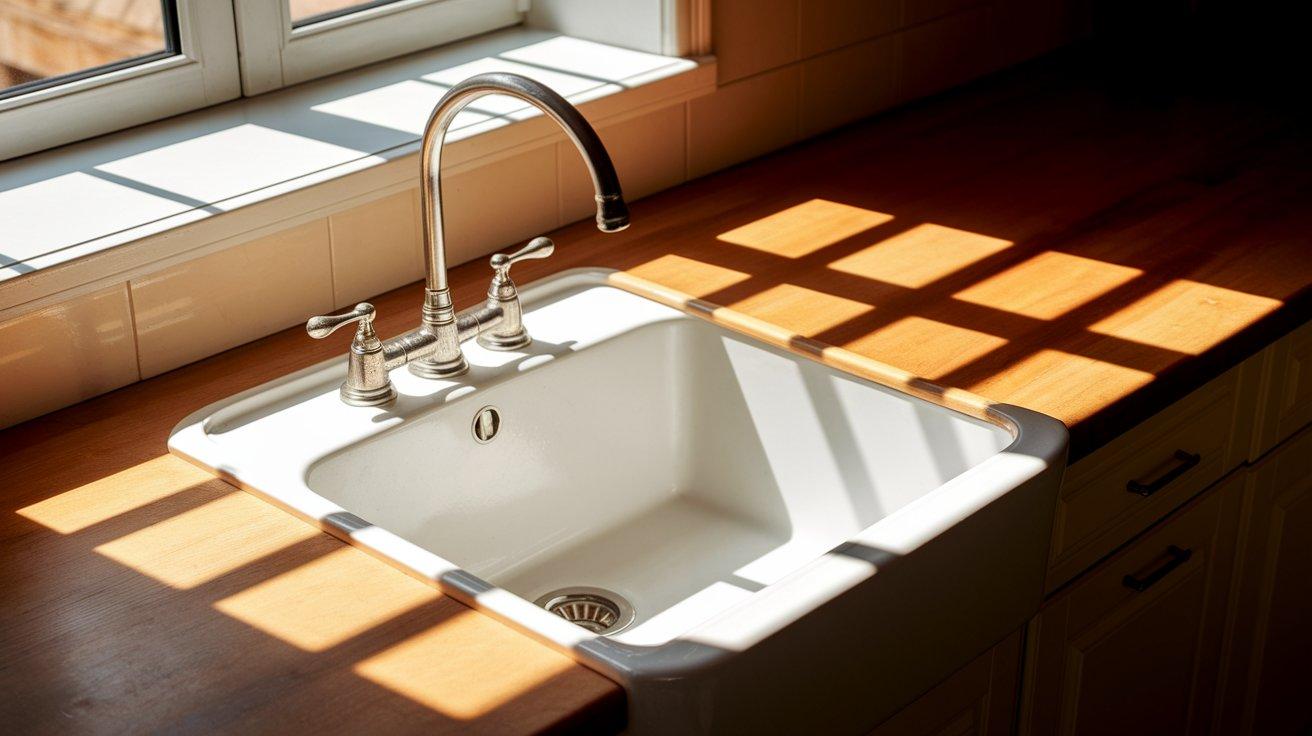
What to know: Porcelain sinks offer the classic white look that many homeowners desire.
Problems: These sinks chip with minimal impact—even a dropped pan can cause permanent damage. The white surface shows every food stain, and these stains often become permanent. The material can also crack when exposed to rapid temperature changes.
Who might still choose it: Homeowners who rarely cook and are extremely careful with kitchen use.
2. Cheap Stainless Steel: False Economy
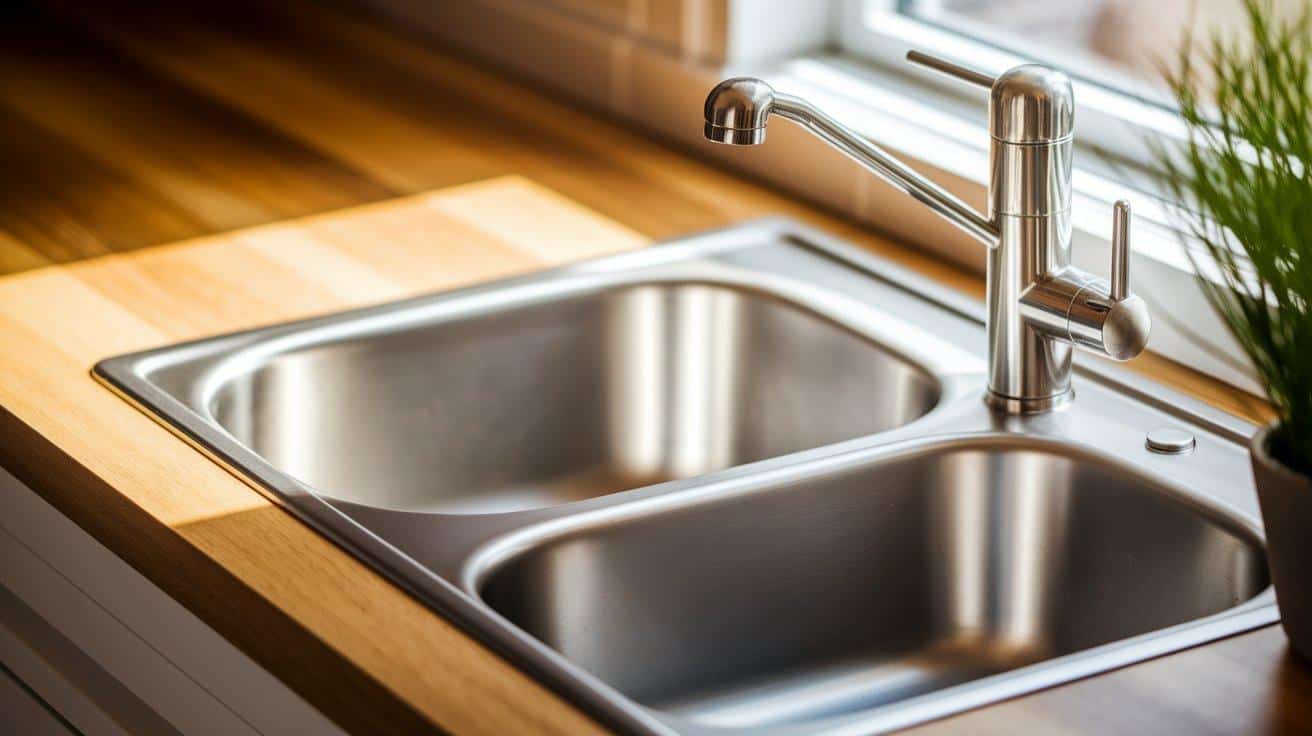
What to know: Budget stainless steel sinks cost less upfront but come with major drawbacks.
Problems: The thin-gauge metal (typically 22-gauge or higher) dents from minimal impact. These sinks produce excessive noise when water hits the surface or when items are placed in them. Water spots and fingerprints are visible on the surface and require regular wiping.
Who might still choose it: Rental property owners looking for the absolute lowest initial cost.
3. Acrylic Sinks: Temporary at Best
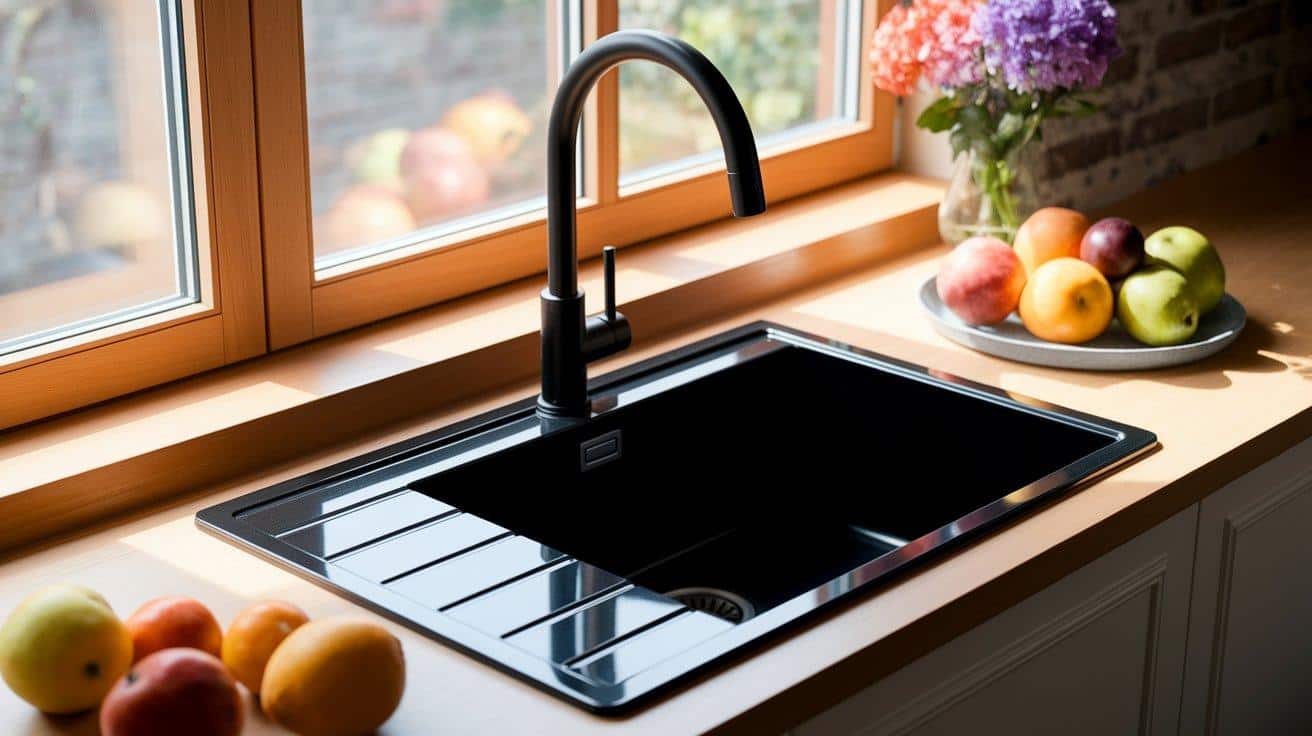
What to know: Acrylic appears modern and comes in numerous color options.
Problems: This material scratches from normal cleaning. Even mild abrasives leave permanent marks. The surface yellows noticeably within 1 to 2 years. Hot pots or pans can instantly melt the surface.
Who might still choose it: Those planning a renovation within 2-3 years who need a very short-term solution.
4. Low-Quality Copper: High Price, Poor Performance
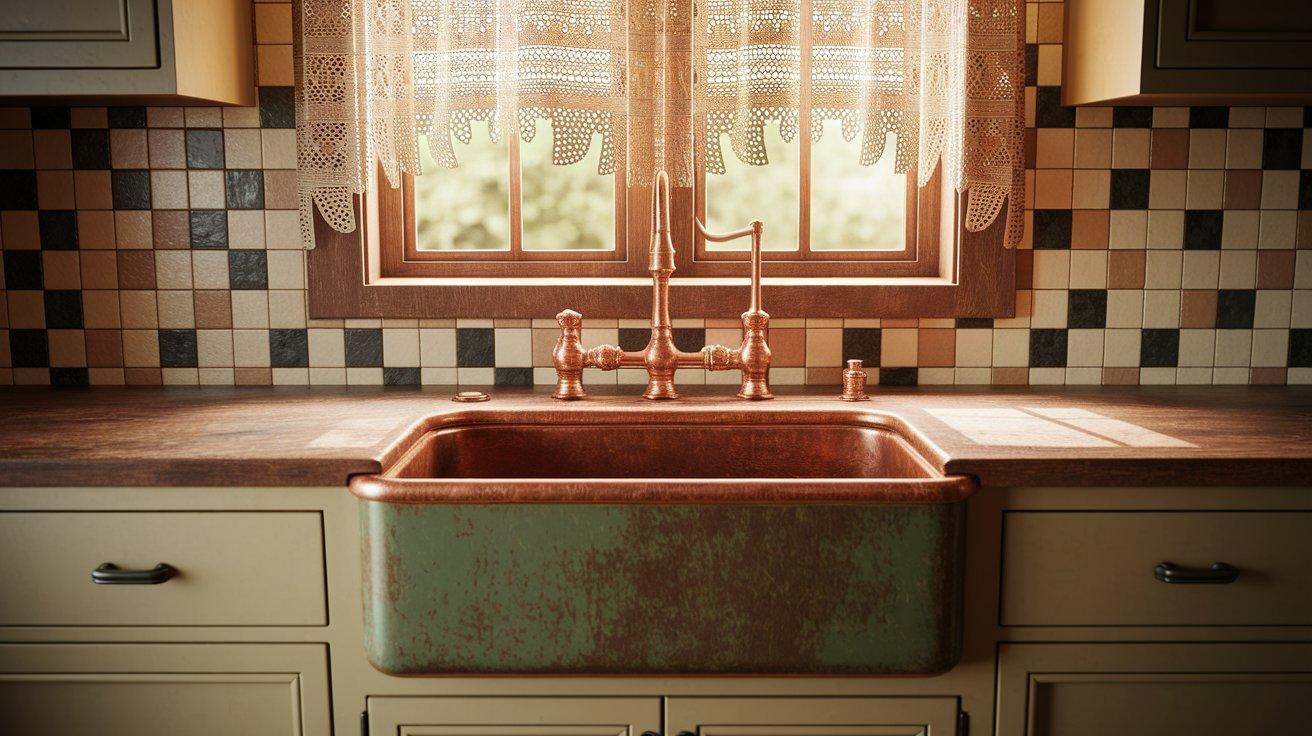
What to know: Copper has become a popular choice in kitchen design.
Problems: Inexpensive copper sinks are made from thin material that dents easily. They develop an inconsistent patina rather than an attractive aged look. They require weekly maintenance to prevent spotting and discoloration.
Who might still choose it: Style-focused homeowners who don’t mind high maintenance.
5. Cheap Stone Composite Sinks: False Promise
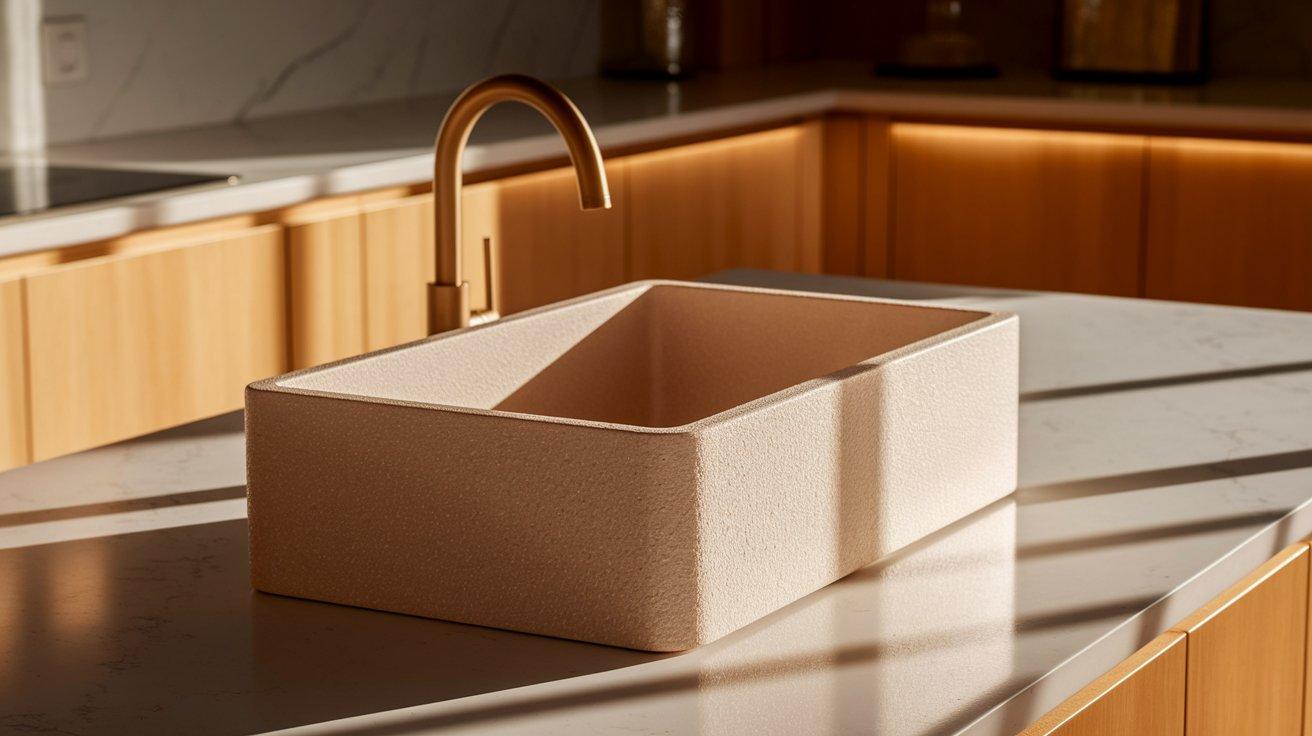
What to know: These sinks aim to replicate the appearance of natural stone.
Problems: Low-quality binding resins break down with normal use. The surface becomes increasingly rough, catching food particles and bacteria. Once stained, these materials cannot be restored to their original appearance.
Who might still choose it: Budget-conscious shoppers trying to achieve a high-end look without the cost.
6. Cast Iron with Thin Enamel: Heavy Problems
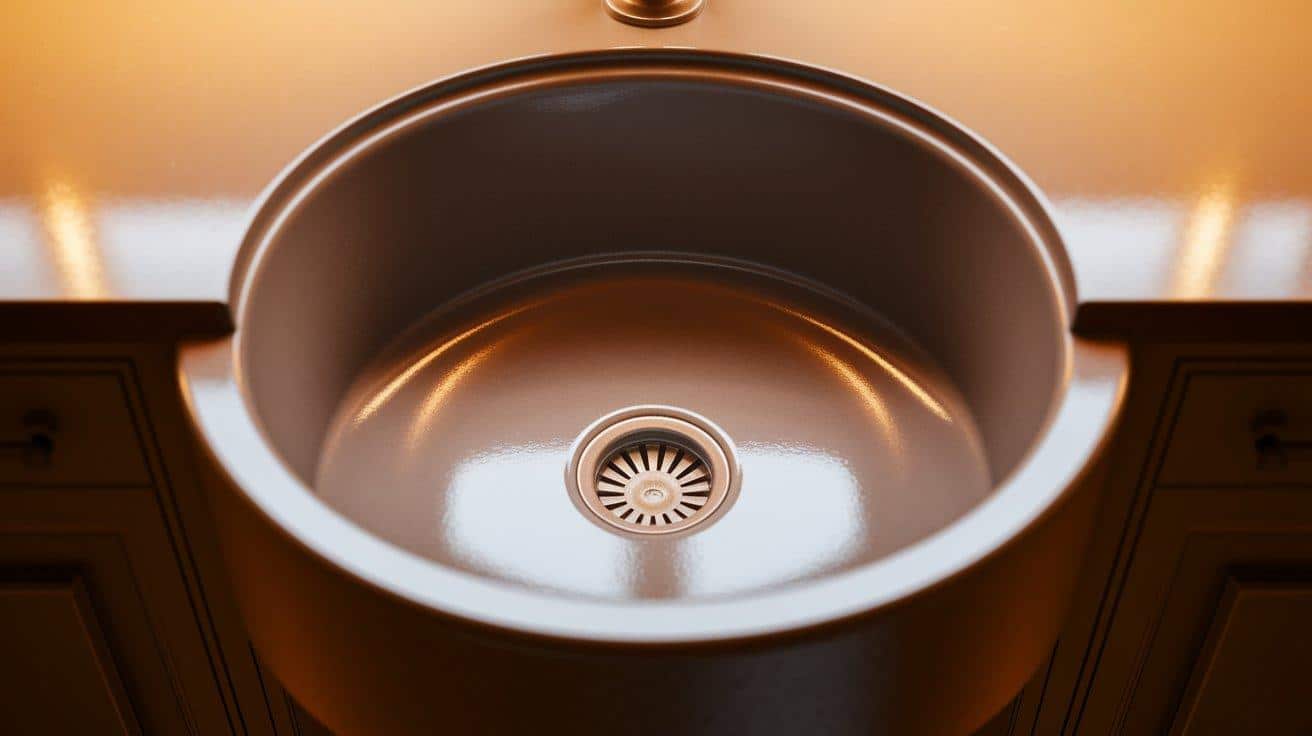
What to know: These heavy sinks have a classic appeal.
Problems: The thin enamel coating chips easily, exposing the iron beneath to rust. Once damaged, repairs are difficult and obvious. The extreme weight (often 100+ pounds) makes installation challenging and can stress cabinetry.
Who might still choose it: Traditionalists seeking an authentic vintage kitchen look.
7. Bamboo Sinks: Eco-Friendly Failure
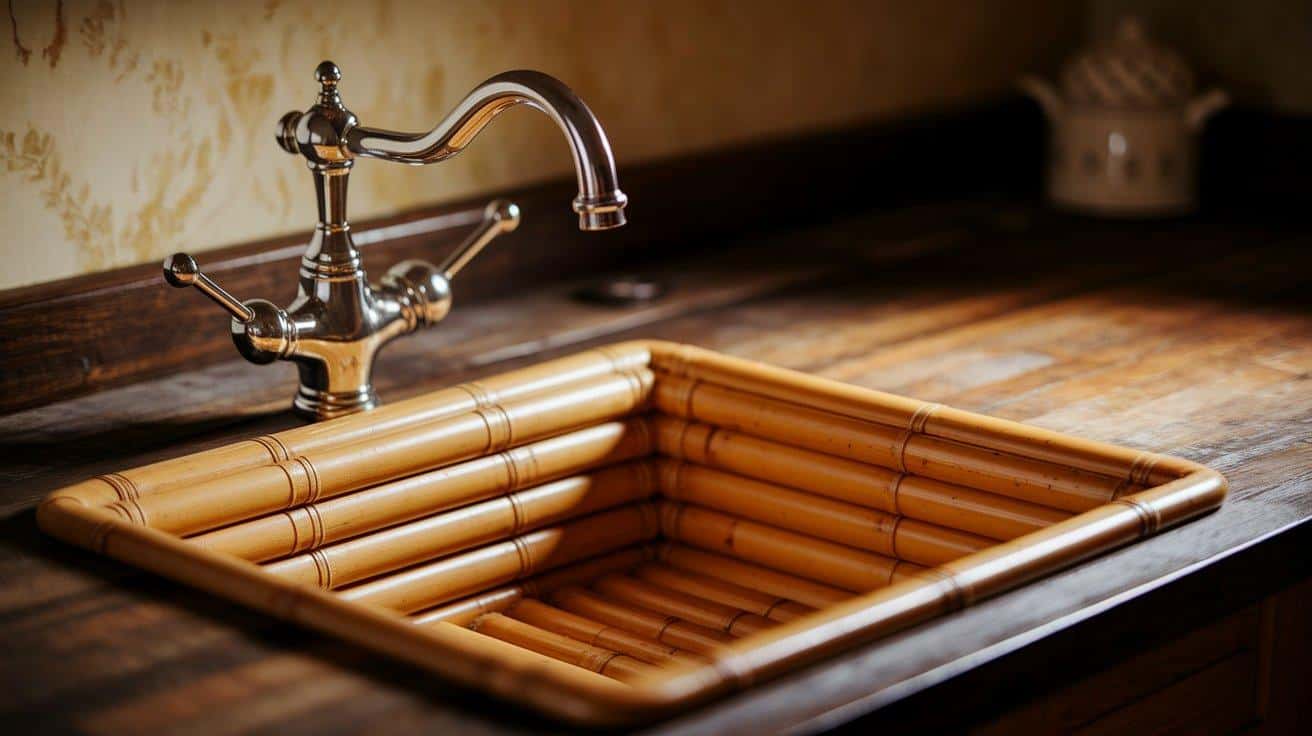
What to know: Bamboo offers a renewable, natural material option.
Problems: Despite sealing, bamboo warps when exposed to daily moisture. The material must be resealed monthly to prevent water damage. Mold grows in the grain, creating health concerns. Most bamboo sinks last less than 5 years.
Who might still choose it: Strict environmentalists willing to replace their sink regularly.
8. Tempered Glass Sinks: High-Maintenance Show Pieces
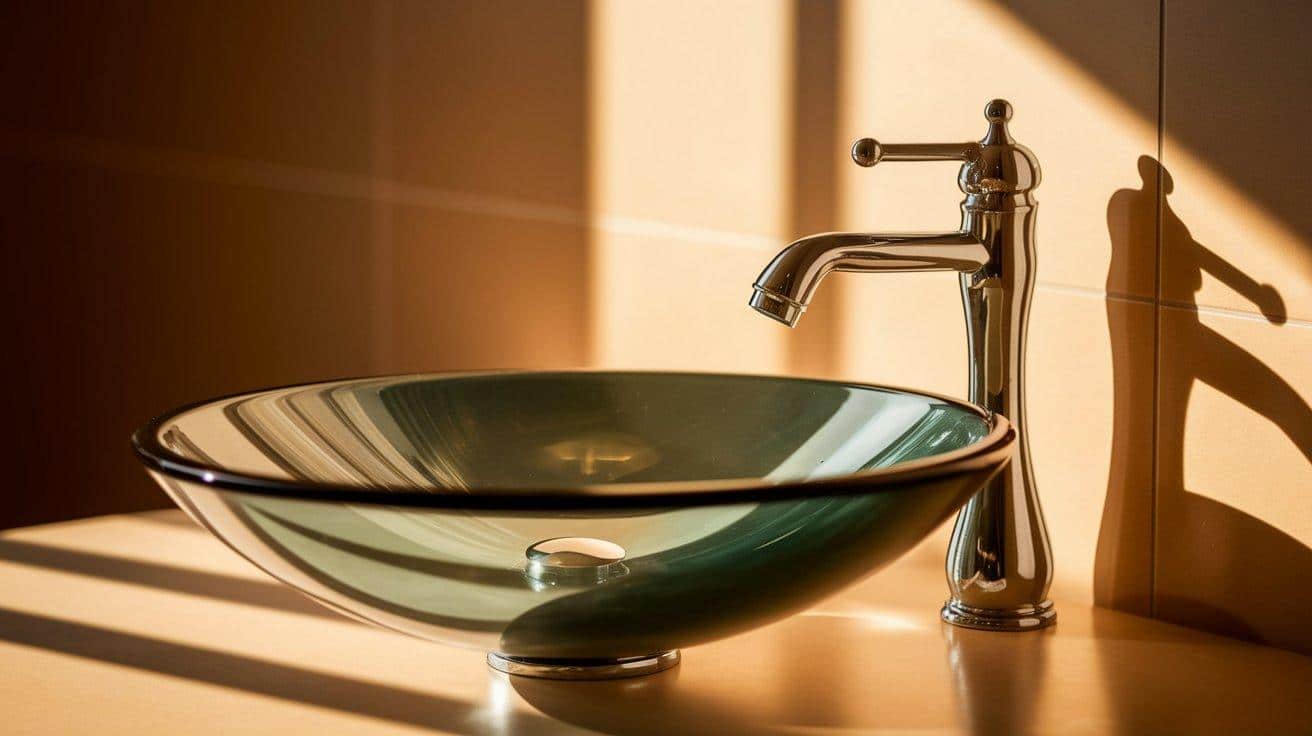
What to know: Glass sinks create a dramatic visual statement in kitchens.
Problems: Every water drop and soap residue remains visible on the surface. The material can crack from thermal shock when hot water meets a cold sink. The surface requires cleaning after each use to maintain its appearance.
Who might still choose it: Design-focused homeowners who use their kitchen minimally.
9. DIY Concrete Sinks: Professional Skills Required
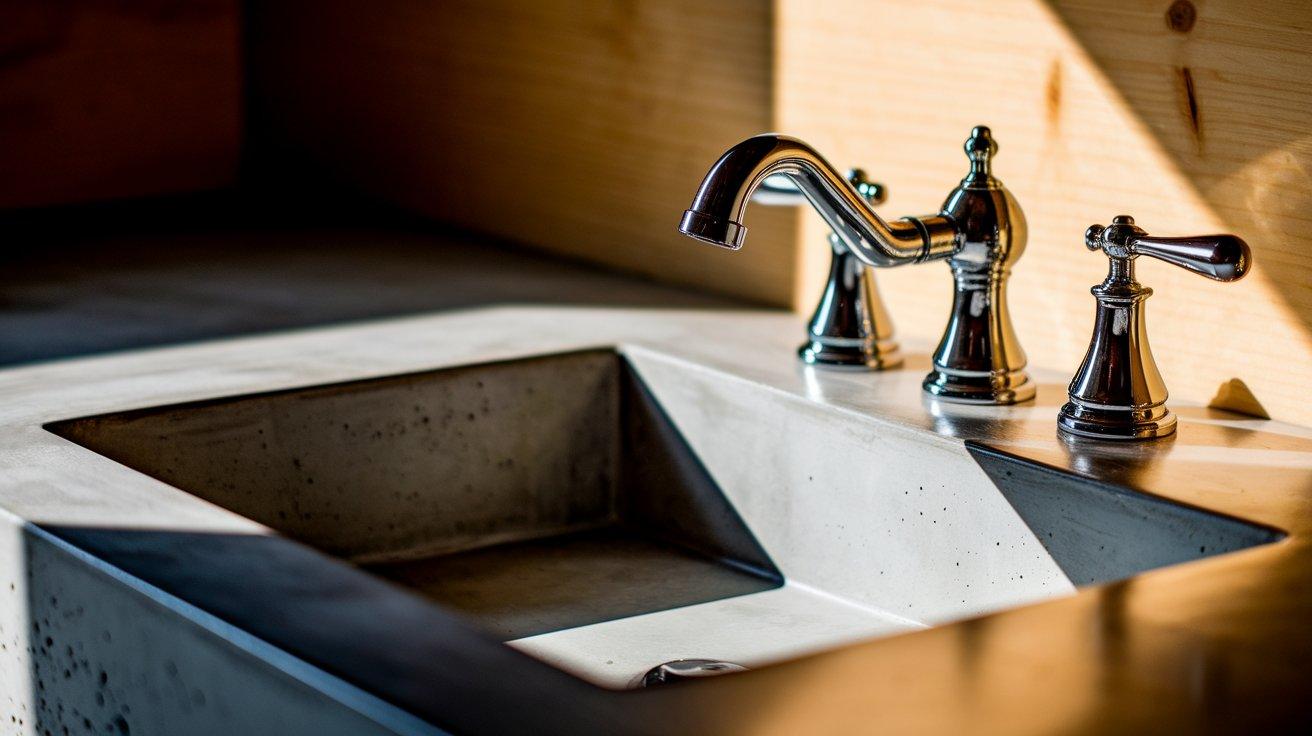
What to know: Concrete offers a customized, industrial look.
Problems: Without proper mixing techniques, these sinks develop cracks within months. The porous surface harbors bacteria without professional sealing. Most DIY versions stain permanently from everyday kitchen activities.
Who might still choose it: Experienced DIYers with concrete working knowledge.
10. Solid Surface Materials: Looks Cheap Quickly
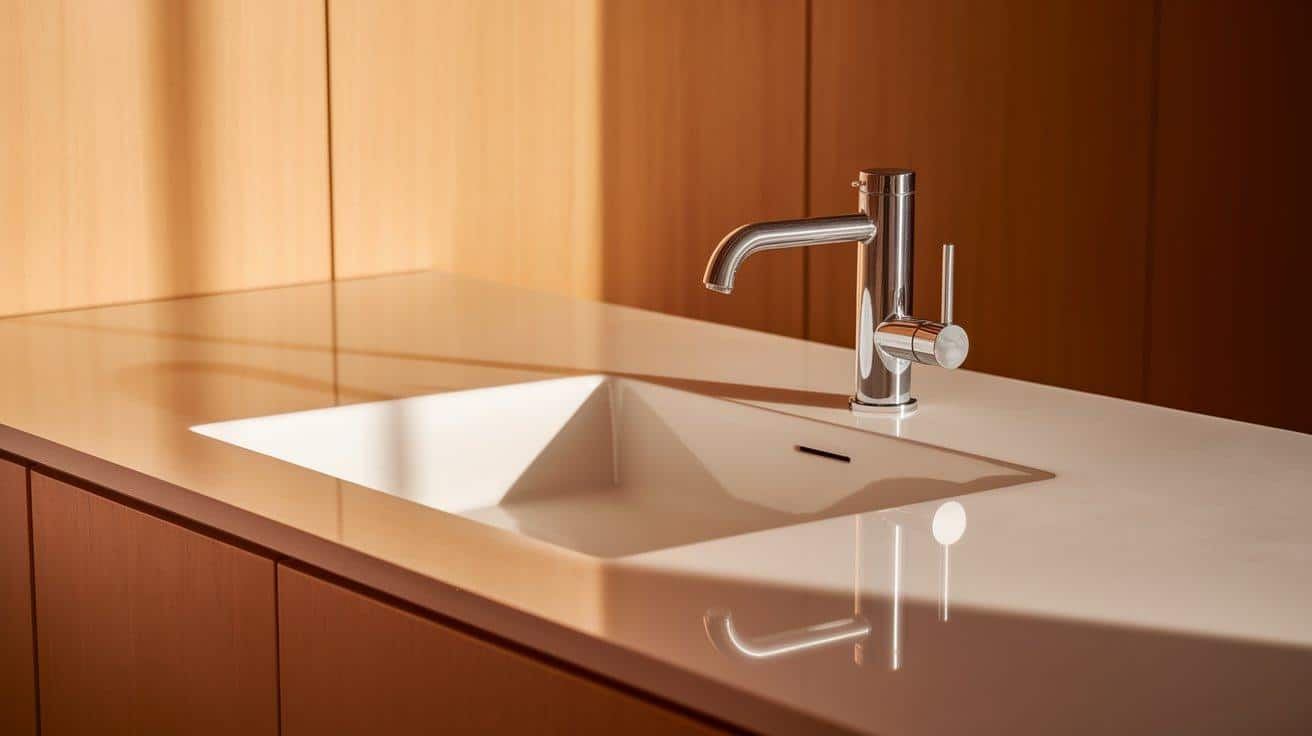
What to know: Materials like Corian offer seamless installation and a wide range of color options.
Problems: The surface scratches from normal use, showing visible marks within weeks. Heat damage is permanent. The artificial appearance tends to look outdated as trends change. Repairs, while possible, remain visible.
Who might still choose it: Homeowners seeking a precise color match for their countertops.
11. Basic Ceramic Sinks: Breaks Under Pressure
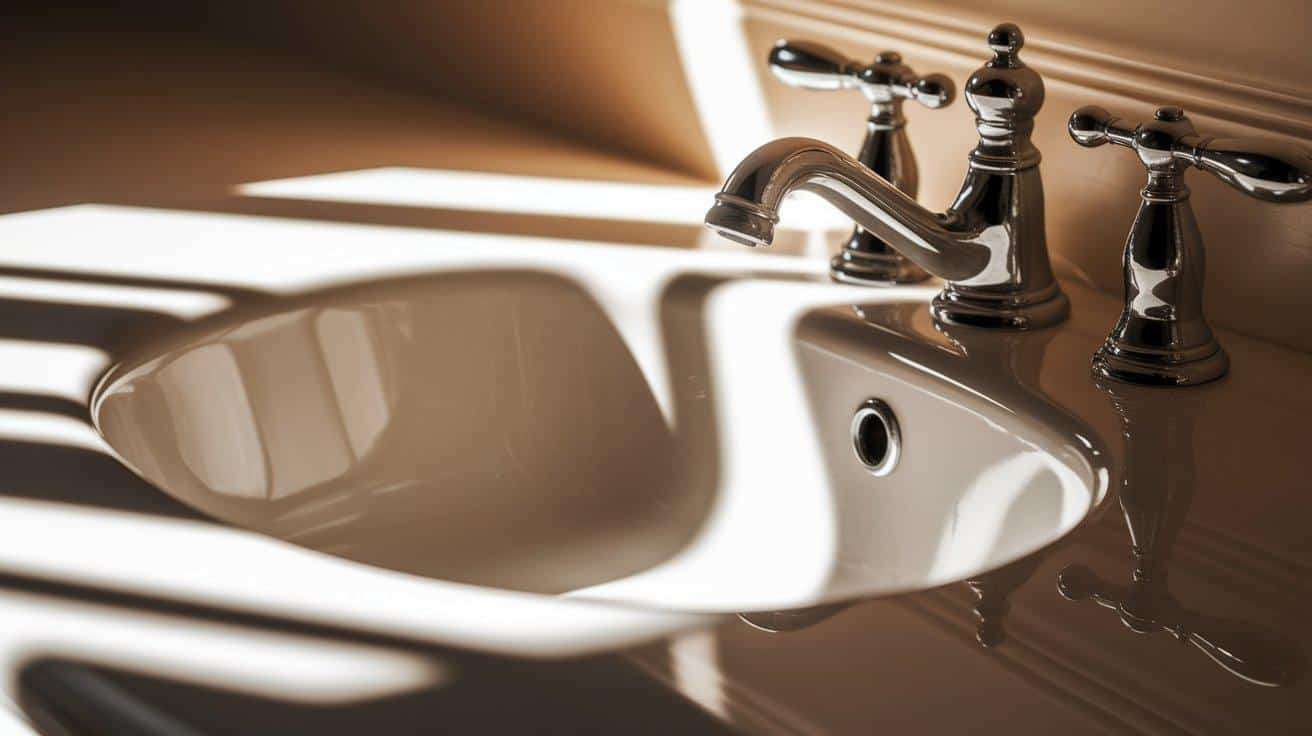
What to know: Ceramic sinks offer a clean, white appearance at a lower price point than porcelain sinks.
Problems: The brittle material chips and cracks easily during normal kitchen use. Hard water leaves visible stains that become permanent. Colored ceramics fade unevenly with exposure to cleaning products.
Who might still choose it: Small households with gentle use patterns.
12. Cheap Granite Composite: Falls Apart Fast
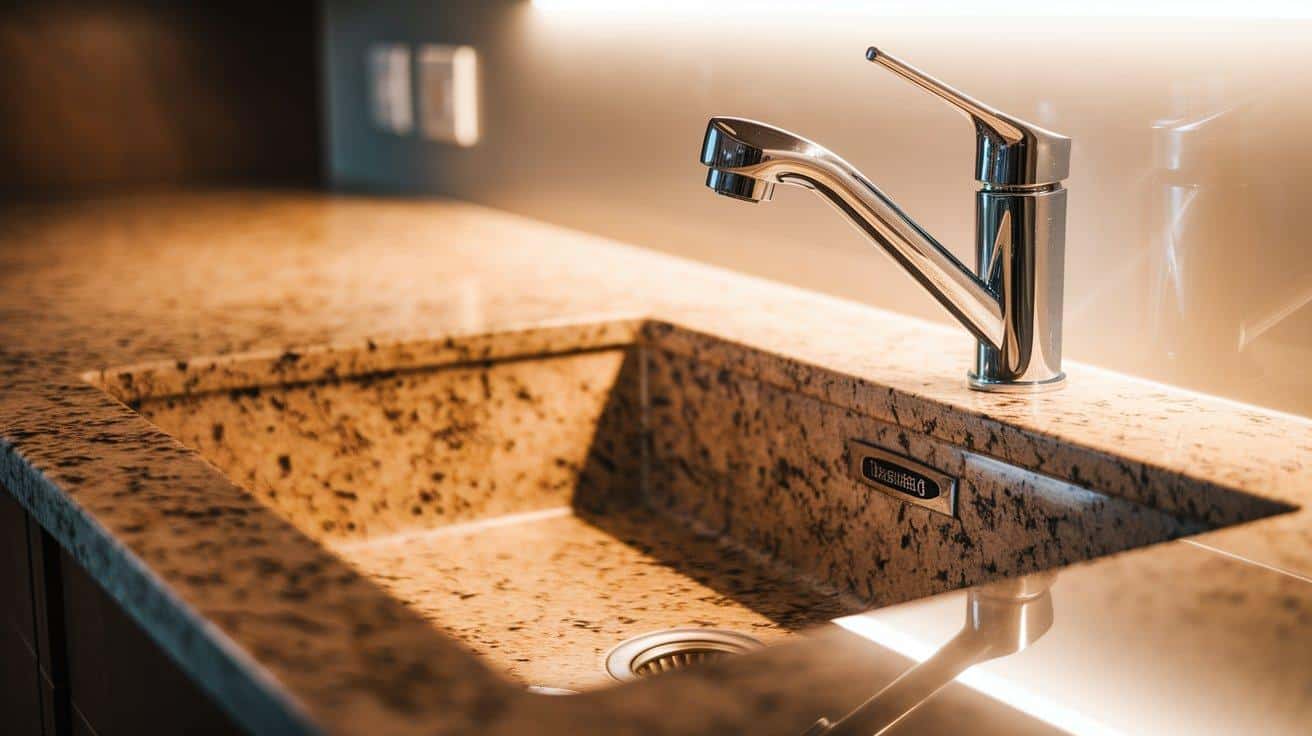
What to know: These sinks attempt to offer stone-like durability at a lower price.
Problems: Poor manufacturing leads to inconsistent material strength. The surface becomes increasingly rough over time, trapping food particles. Colors fade unevenly with UV exposure from nearby windows.
Who might still choose it: Homeowners looking for an affordable stone-look sink for low-traffic kitchens.
What Makes Kitchen Sinks Fail
Kitchen sinks face three major challenges that cause poor-quality materials to break down quickly:
- Heat Changes – Hot pans and rapid temperature shifts cause weak materials to crack, warp, and discolor. Daily use exposes these flaws within months.
- Chemical Exposure – Acidic foods, cleaning products, and drain solutions damage sensitive materials. Over time, surfaces become rough, stained, or completely compromised.
- Physical Impact – Dropped utensils, heavy cookware, and disposal vibrations constantly test durability. Low-quality sinks develop dents, chips, and structural issues that worsen with normal use.
Good sink materials can withstand these stresses for decades; poor ones exhibit problems almost immediately.
How to Make a Better Kitchen Sink Choice
When selecting a sink that won’t disappoint, focus on these three key factors:
- Match Your Lifestyle – Heavy cooking requires durability, families benefit from noise reduction, and frequent hosts need stain resistance.
- Value Over Time – Quality materials (high-grade stainless steel, composite granite, fireclay) last 15-25+ years, making higher initial costs worthwhile.
- Honest Maintenance Assessment – Some sinks may look great, but they require daily cleaning. Choose based on your actual habits, not wishful thinking about future care routines.
Conclusion
Selecting the right kitchen sink material can significantly impact your daily life for years to come. By avoiding these 12 problematic materials, you can save yourself from constant repairs, replacements, and frustration.
When shopping for your next kitchen sink, prioritize quality materials that align with your usage patterns and maintenance preferences.
Remember that the true cost of a sink includes its lifespan—a higher upfront investment often leads to many more years of trouble-free use. Make your next kitchen sink purchase a thoughtful one.
Frequently Asked Questions
What Is the Toughest Kitchen Sink Material?
Fireclay and 16-gauge stainless steel are considered the most durable materials for kitchen sinks, offering exceptional resistance to chips, dents, heat, and heavy daily use.
What Type of Material Is Best for A Kitchen Sink?
Stainless steel is the best overall material for a kitchen sink due to its durability, resistance to stains and heat, affordability, and ease of maintenance.
What Is the Best Brand of Kitchen Sink?
Kohler is widely regarded as one of the top kitchen sink brands, renowned for its exceptional quality, durability, and stylish designs.

